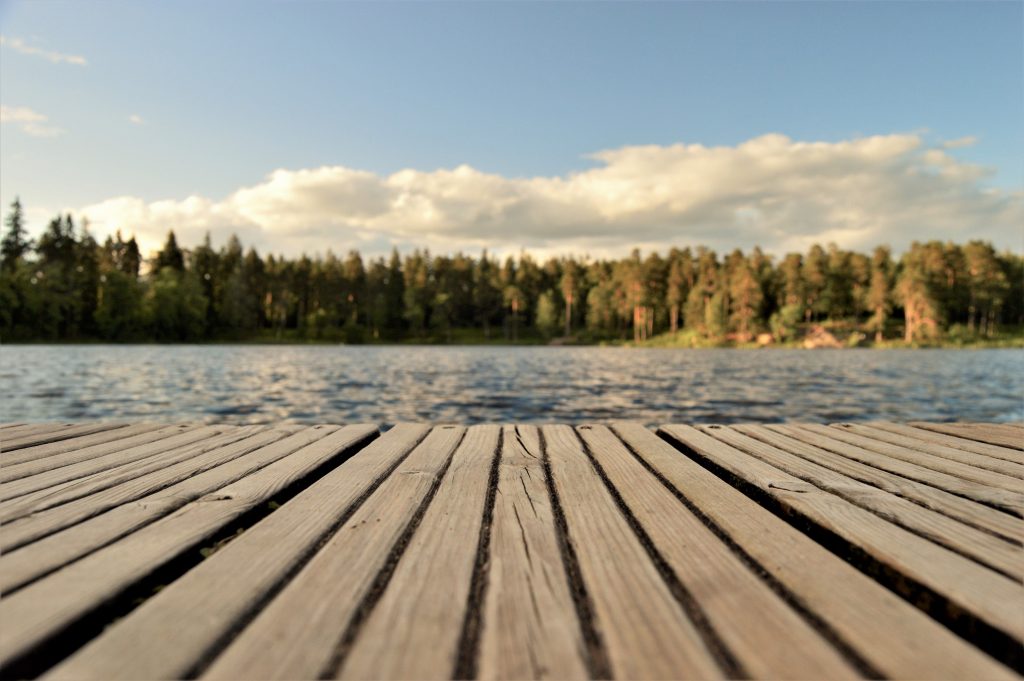What You Need to Know About Lake Management

Lakes and ponds are beautiful natural resources that unite people, support wildlife, and add a sense of place. They are also complex and continually influenced by what people do within the watershed.
Year-round management plans effectively slow the aging process in lakes and ponds by keeping them clean, healthy, and balanced.
Water Quality
Water quality combines physical, chemical, and biological factors determining how well a lake can support aquatic life. Water quality can be affected by various anthropogenic activities and natural factors such as weathering, evaporation, deposition of dust, salt, and other contaminants, runoff from roads and soils, and biological processes within the lake itself.
Point source pollution, which contains toxins linked to a specific source and place, and non-point source pollution, which contains contaminants that cannot be linked to a single source, can be classified according to how the pollution enters the water body. Pollutants with a point source are simpler to control than those with a non-point source.
Water Chemistry
The water chemistry of lakes includes various chemical interactions, such as hydrogen bonds. These are polar covalent bonds between hydrogen and oxygen atoms in the water molecule.
Water chemistry is important for lake management. It can affect lake budgets, nutrient enrichment, and lake morphology.
In a typical lake, runoff, and groundwater enter from the surrounding area. Phosphorus from these sources is redeposited in the bottom of the lake, where it can stimulate algae growth and promote algal growth in other areas of the lake that are not receiving in-lake treatment.
Water Temperature
The water temperature of lakes is a major concern for lake management, as it affects water’s biological and chemical properties. Temperature influences water’s density, conductivity, pH, and ability to hold dissolved oxygen (DO) in a given volume.
As temperatures increase, lakes are more likely to become anoxic or hypoxic. This causes dead zones in lakes, resulting in fish mortality and toxic algal blooms.
Sediment
Sediment is a natural part of many lake ecosystems, but its quantity and characteristics can affect its physical, chemical, and biological integrity. This is why sediments are often a focus of management.
Typically, sediment is deposited by fluvial processes such as rainwater runoff or a stream. However, it can also be deposited by aeolian processes such as dunes and wind. Ice-deposited sediments are also common in lakes and oceans.
Algae
Algae are plant-like organisms that can grow in many different types of water. They can use sunlight and carbon dioxide to produce energy through photosynthesis.
In lakes, algae are at the base of aquatic food webs, providing energy directly or indirectly to many different lake life forms, including fish, zooplankton, and other plants. They also replenish the water with oxygen through photosynthesis.
Harmful algal blooms, known as HABs, disrupt the natural balance of a lake and can impact human health. They can cause the water to turn green, taste moldy and smell bad.
Macrophytes
Macrophytes are aquatic plants that grow in or near water. They can be emergent, underwater, or floating, including helophytes (partially submerged plants).
In lakes, macrophytes provide habitat for fish, aquatic invertebrates, and some animals, produce oxygen, and act as food for many species. They also improve water quality and are an important indicator of a lake’s overall ecological status.
Shallow lakes depend on submerged aquatic plants to maintain good water quality and biodiversity. They also provide positive feedback that increases water clarity, including suppressing phytoplankton growth and promoting denitrification.
Fish
Fish in lakes and rivers are a vital part of the ecosystem. They play a role in food production, foraging, reproduction, and habitat and provide recreational fishing opportunities.
Whether you are a lake or pond manager, it is important to understand the fish living in your water body. This information will help you decide where to stock, which species to avoid, and how to manage your lake for a sustainable fishery.
In addition, it is also important to understand the environment. Environmental cues like season and temperature can affect your fish’s location and feeding behavior.
















